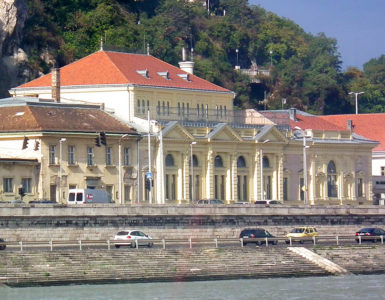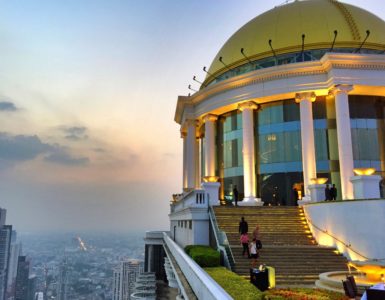Ming, a friend of a friend, meets us in the lobby to escort us for the day.
Ming is one of those Thai people who amaze me with their vocational dexterity. On weekends, he works as a guide, ferrying folks like me or Clyde to the tailor, a museum, a restaurant, an historic site. During the week, Ming — who has a Ph.D. in microbiology, lectures at a local university, teaching intro-level courses to “mostly disinterested dentists.”
He started out working with infectious diseases, which went well until he accidentally exposed himself to a particularly virulent strain of ?hemorrhagic fever. “After that,” Ming says, grinning, “Mom insisted I stop working with infectious diseases and keep strictly to enzymes.”
Thankfully, Ming recovered fully and, these days, is more likely to be tearing his hair out over his PowerPoint presentations than bleeding from his pores. Today, he’s arranging to take us to ?Vimanmek Palace, the golden teakwood palace of King Rama V. It’s an understated attraction, overshadowed by the glitz and glamour of the Grand Palace and, therefore, less frequented by tourists.
Which is a shame, because Vimanmek? Palace is as approachable as a formal royal residence can be. Unlike the Grand Palace, which sets the standard for over-the-top, gold-encrusted Thai formal architecture, the design of Vimanmek was heavily influenced by King Rama V’s travels in the U.K.
The result is a style that can only be described as “Victorian Thai,” with high ceilings (cooler, in this tropical climate), huge rooms with wall after wall of windows, and gleaming floors of hand-polished teakwood. The King resided here, on and off, with any number of his seventy-odd wives. Different sections of the house are color-coded to indicate the wife who resided there. Servants dedicated to one wife were not allowed to cross from one color to the other; if you served the Green Wife, you stuck to the green rooms and did not go a-wandering.
After an enjoyable stroll through the palace, we closed out this visit with a walk through the jaw-dropping Anata Samakhom Throne Hall. Built from imported Carrara marble, this palatial hall fuses the best of the Grand Palace with the best of St. Peter’s Basilica. The frescoes on the ceilings, though, instead of detailing the lives of the saints, recall the adventures of Kings Rama I through VI, as painted by Italian artists and etched in gold by Thai craftsmen. If Michelangelo and Leonardo da VInci had been Buddhists, this is what Rome would have looked like.
Which left us with only one question: how did we miss this place during our first ten visits to Bangkok?
At our late lunch, Bangkok gave up yet another of its secrets: a neighborhood gem of a restaurant, packed with locals, where we swilled iced coffees, noshed on fried toast dipped in coconut-peanut sauce, and ate our fill of garlic chicken. All in all: two appetizers, three generous entrees, three bottles of water, and three iced coffees set me back $15.00 U.S. Don’t try that in Midtown!
We’re back at the hotel now, cooling down before taking the ferry over to our old neighborhood to knock around a while. Then — what? When dinner time rolls around, I’m thinking of heading over to the Shangri La to see if their weekend buffet is still what it used to be. Between now and then … massages, maybe?
Special shout-out to J&J, who had to cancel plans to travel with us due to medical concerns: we miss you very much, and are thinking of you often.



Add comment